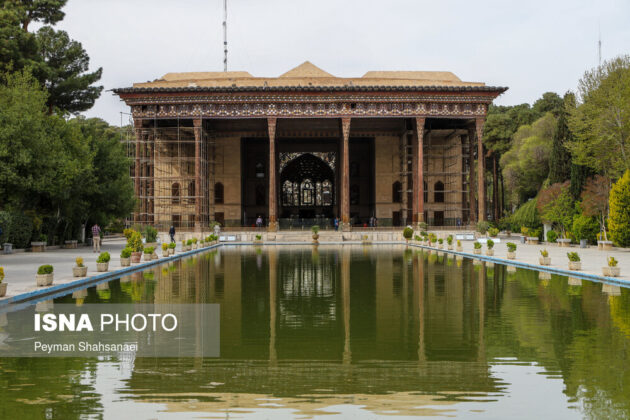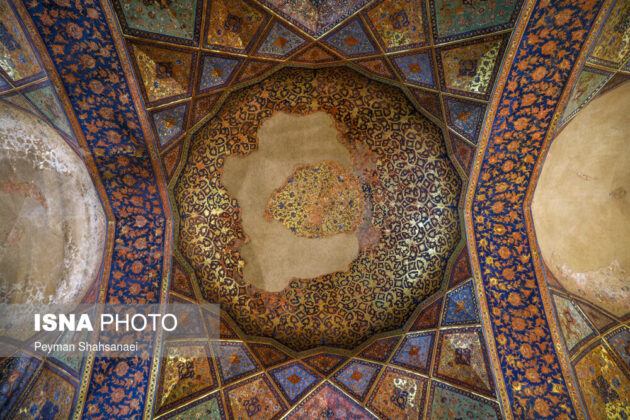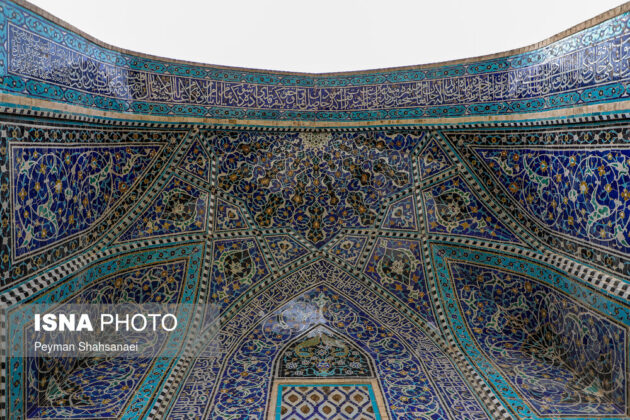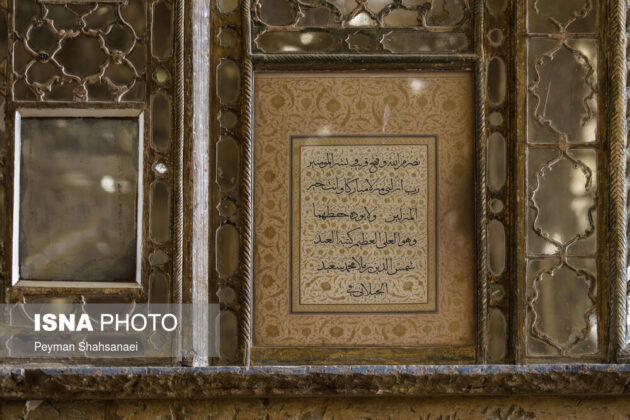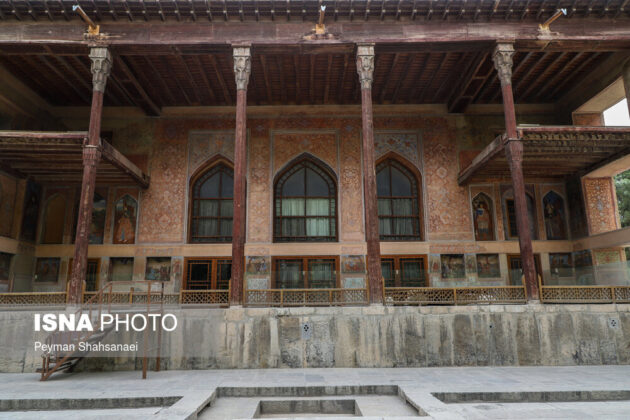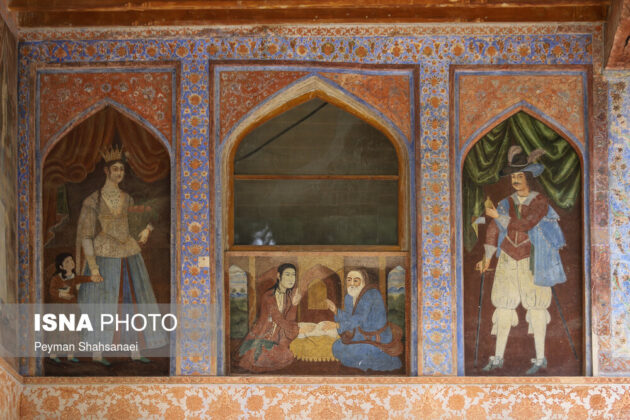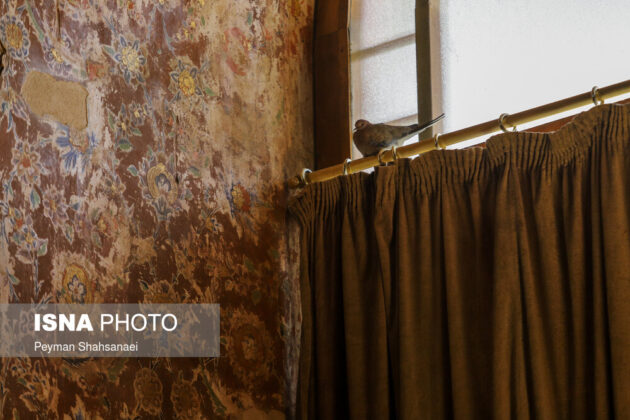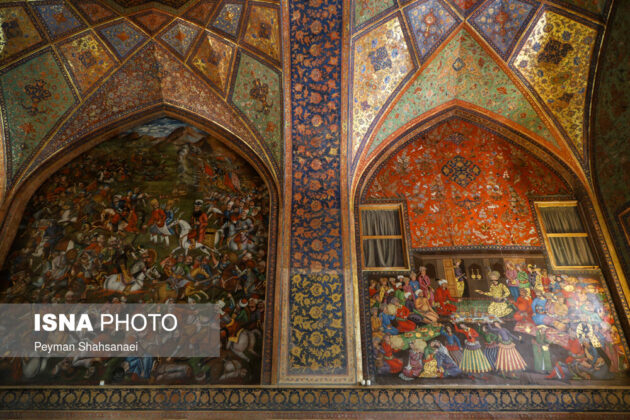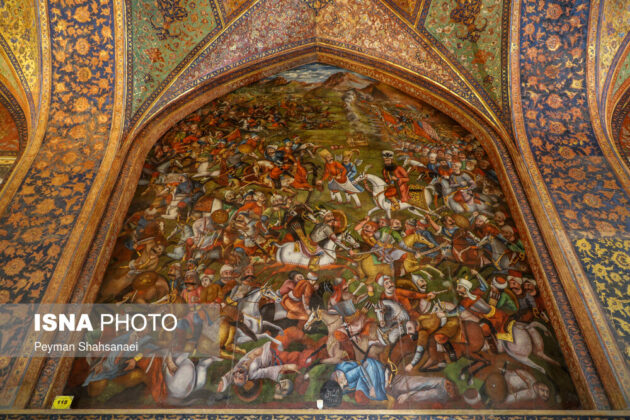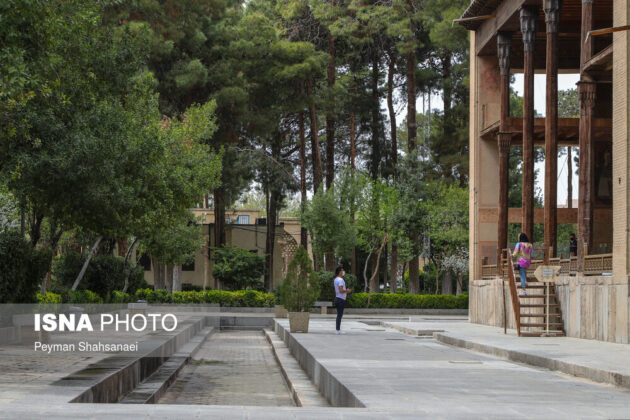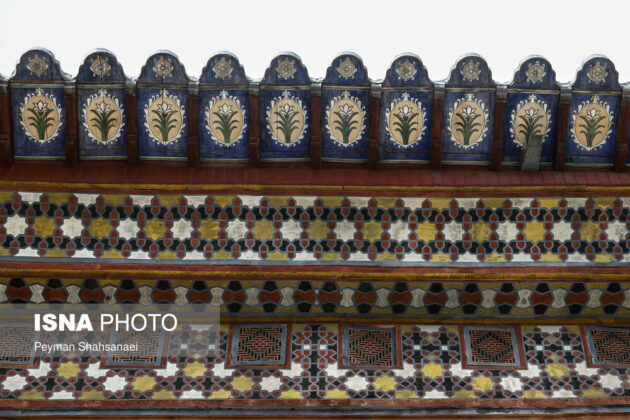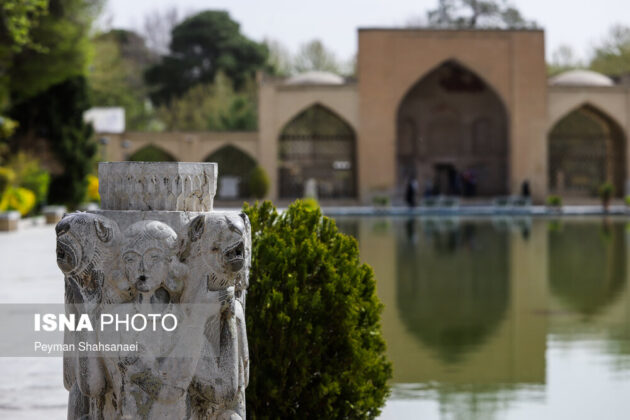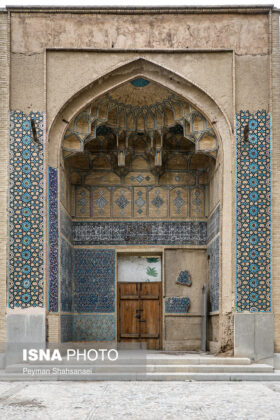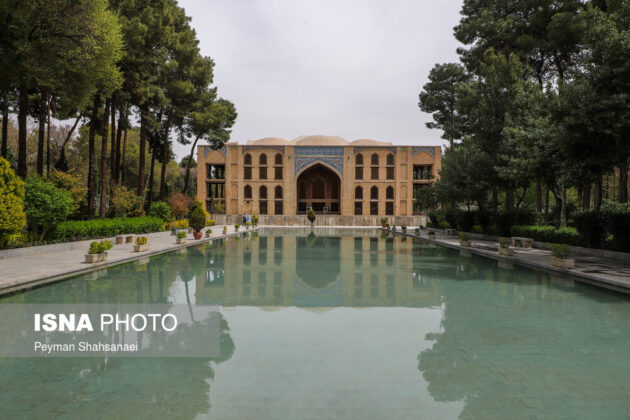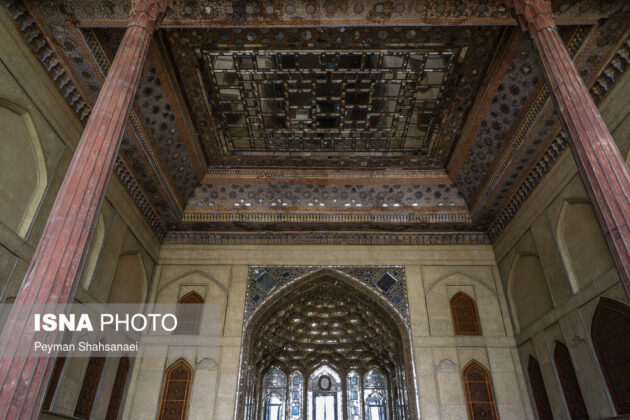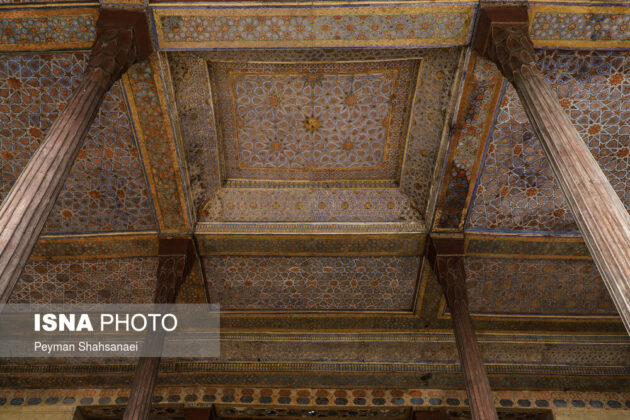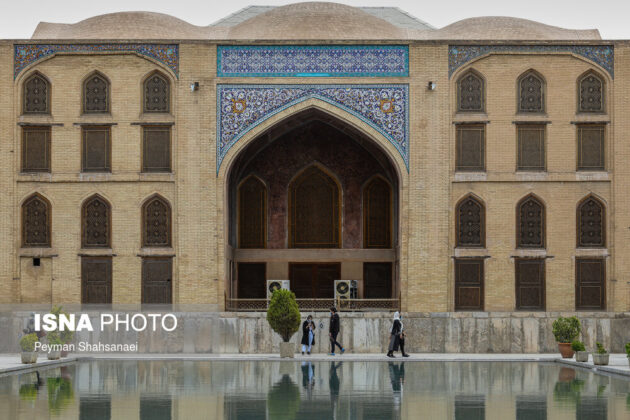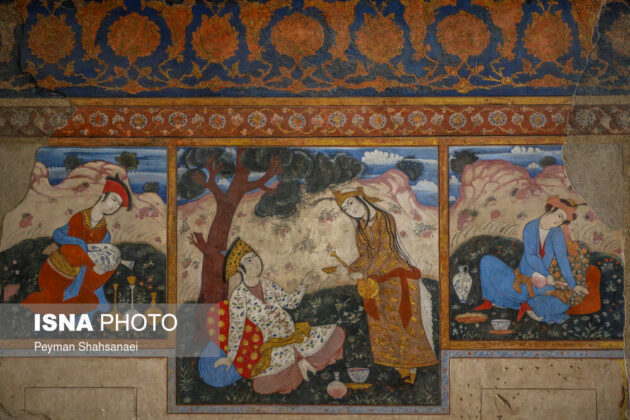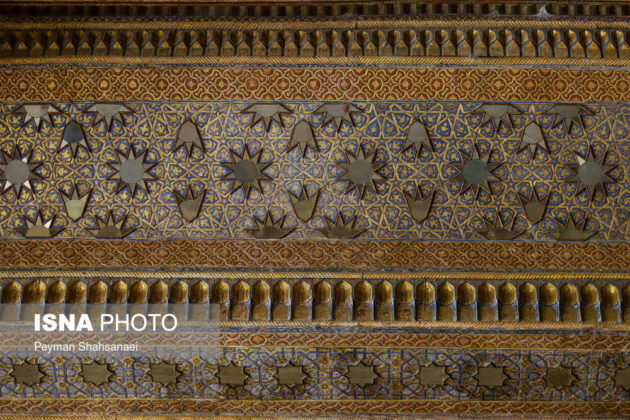The structure, a pavilion in the middle of a park at the far end of a long pool, was built on a 67,000-square-metre expanse of land upon the order of King Abbas I, the fifth Safavid king of Iran.
The structure was completed during the rule of King Abbas II when the central building of the monument was overhauled.
The key changes included the Mirror Hall, the 20-Column Hall, a giant pool in front of the building and all the decorative paintings there.
Chehel Sotoun literally means “Forty Columns” in Persian.
The reason why the structure was named so was that the 20 columns of the 20-Column Hall were reflected in the pool.
The Central Hall of the structure was dedicated to foreign guests and dignitaries.
It is decorated with paintings which depict the historical events of different eras.
This glorious hall with a painting-decorated dome on top is one of the artistic masterpieces of the time.
Chehel Sotoun was registered on Iran’s List of National Heritage sites by the Cultural Heritage Organization in 1931, and decades later in 2011 was put on the World Heritage List of the United Nations Educational, Scientific and Cultural Organization (UNESCO).
